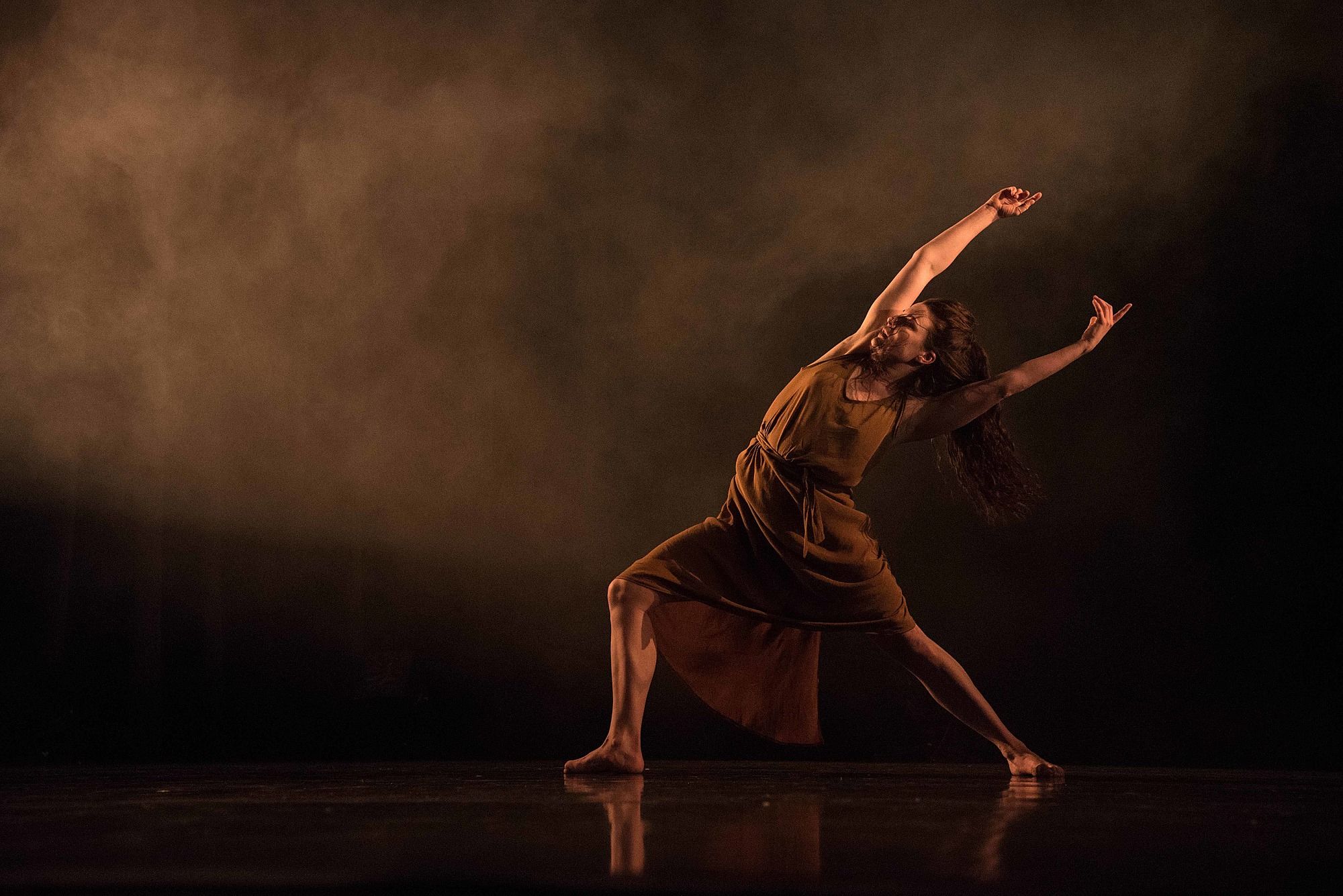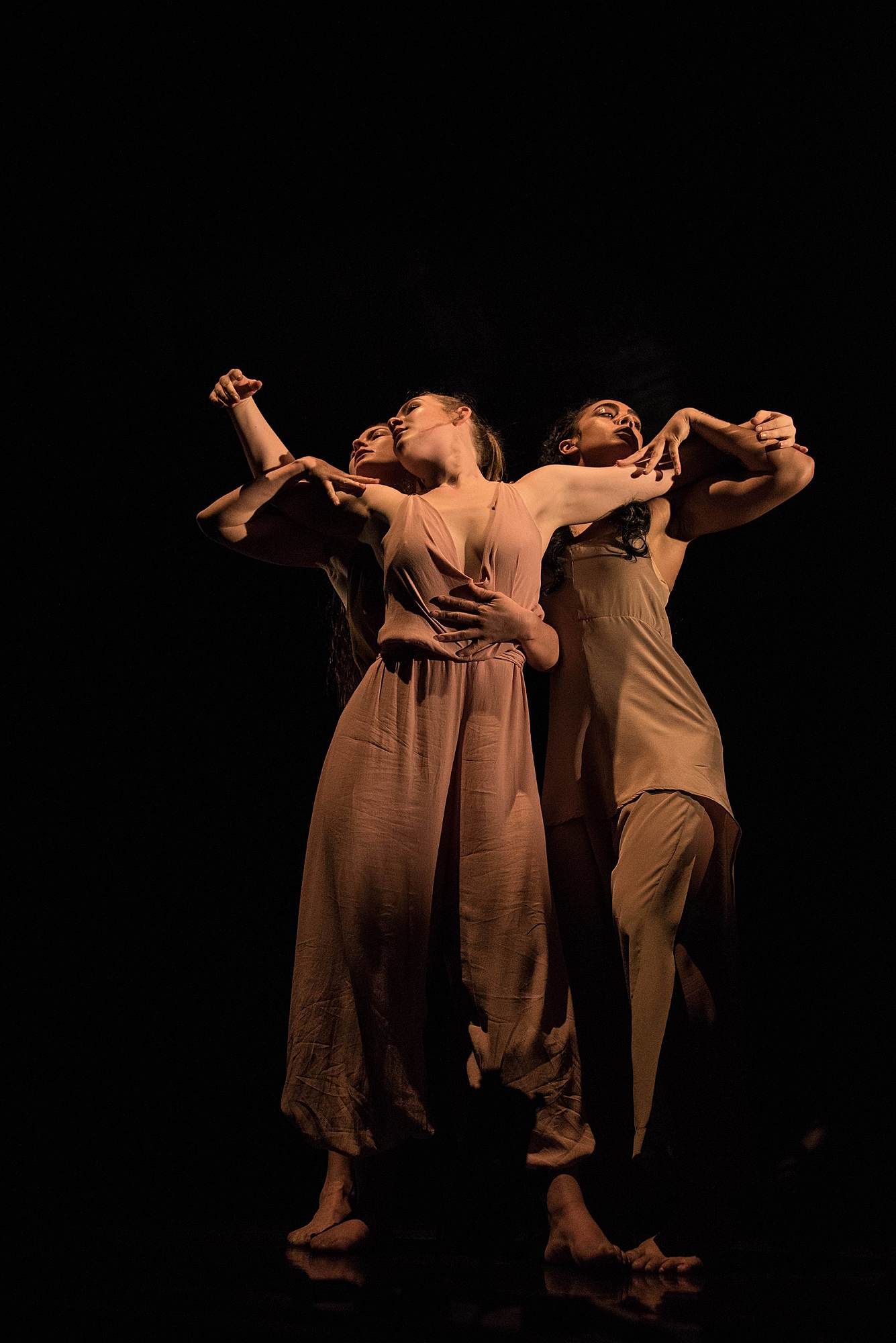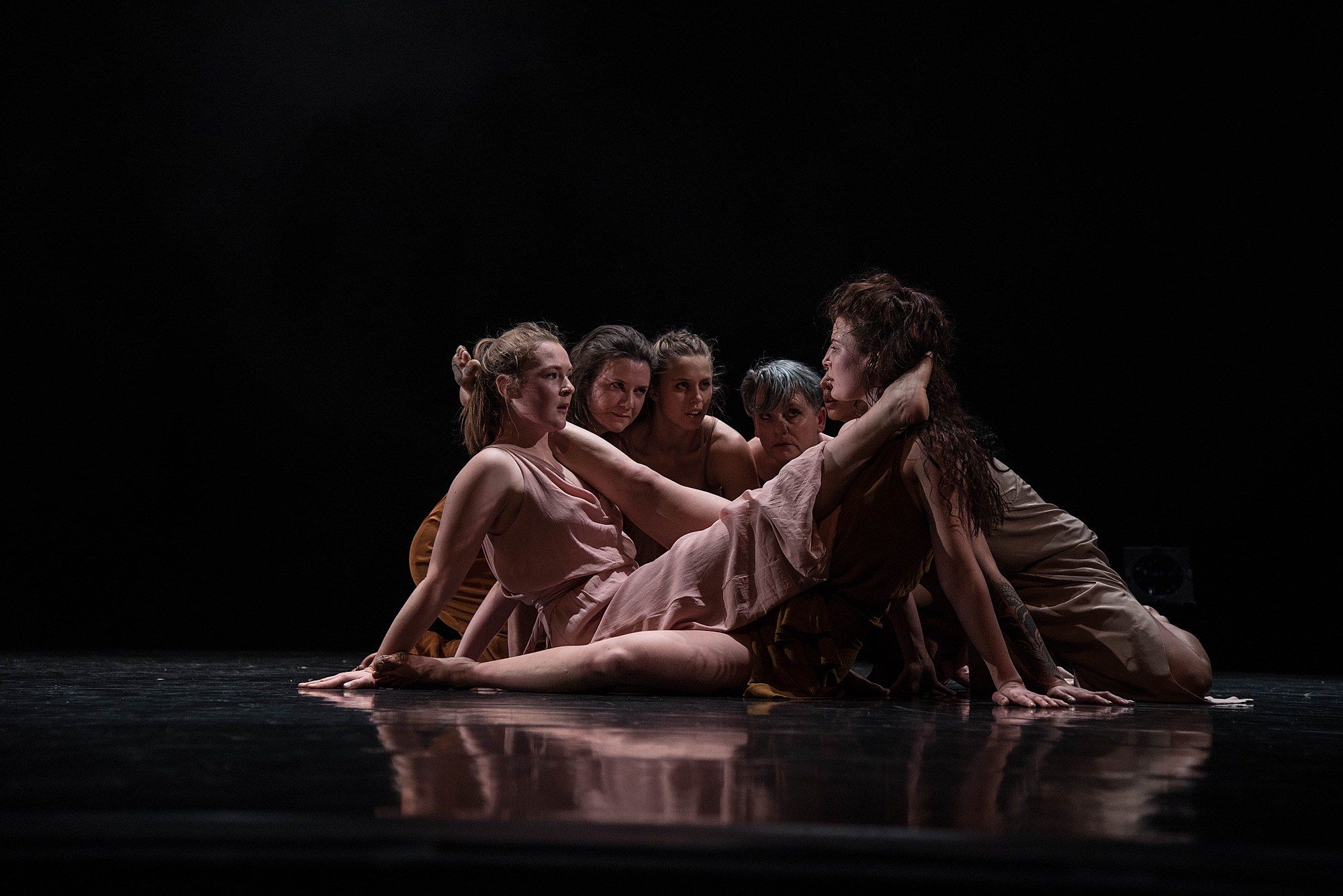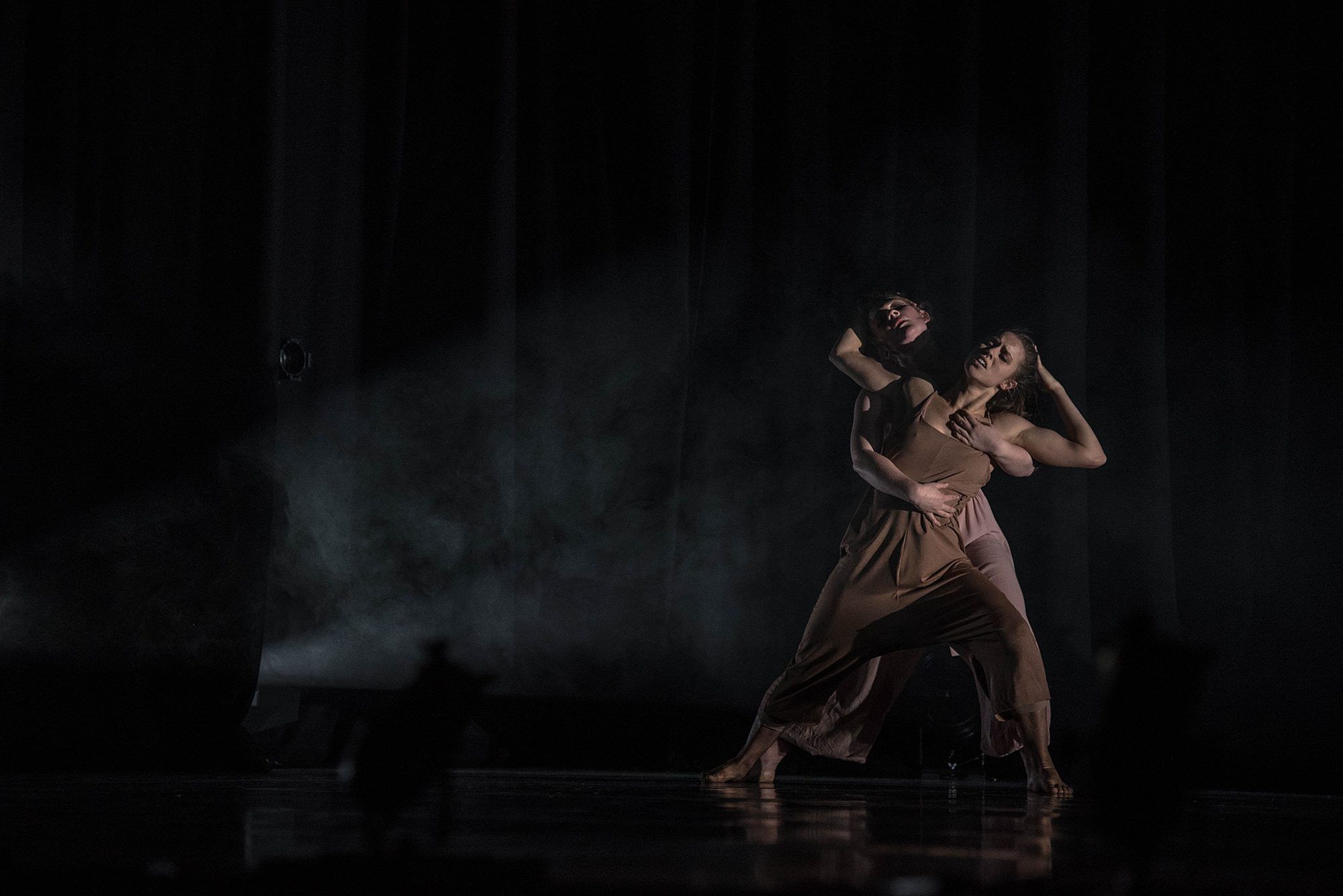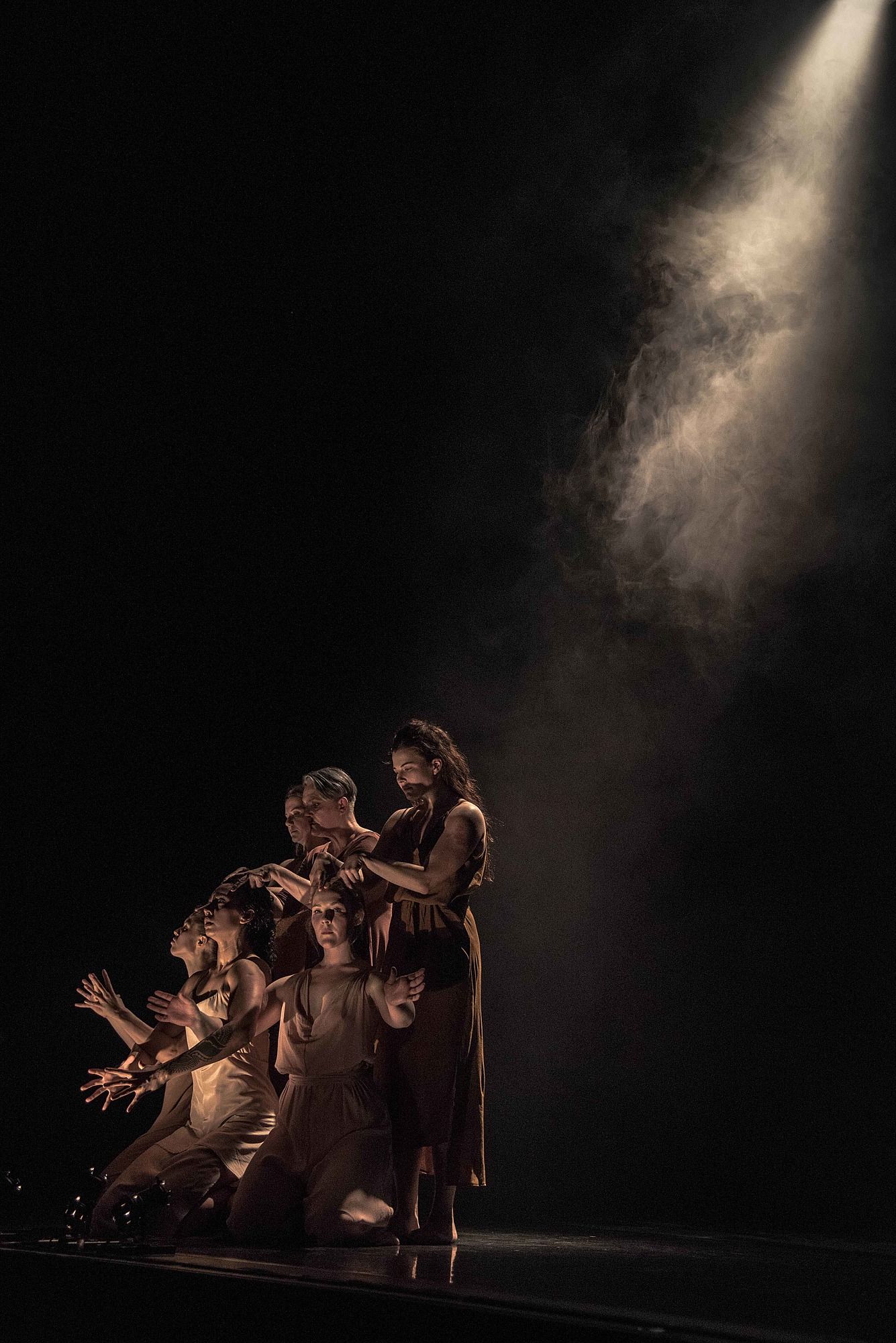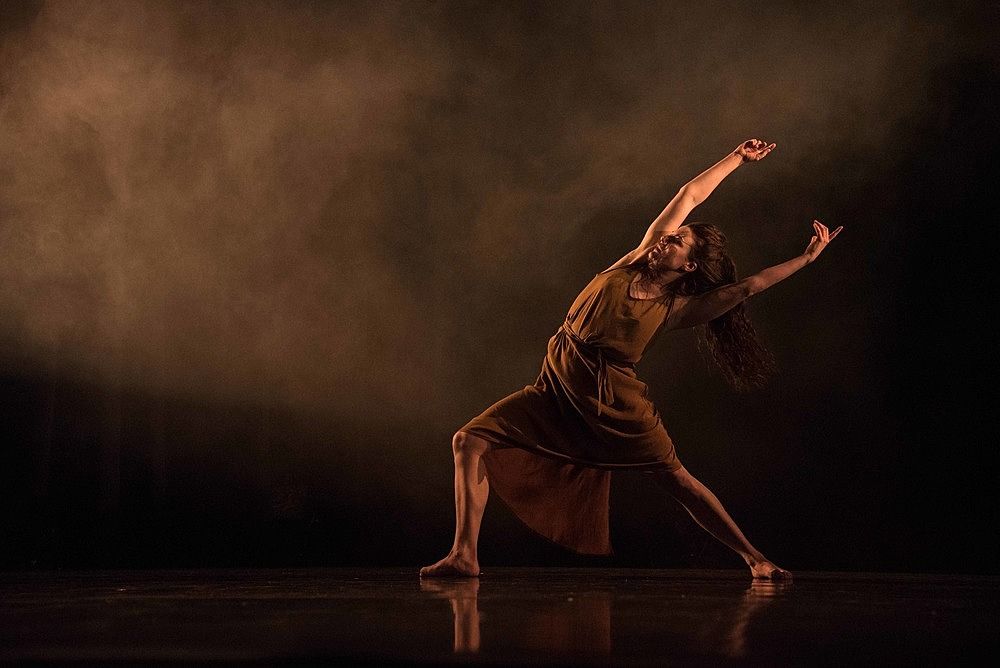Feminine Divine: A Review of Orchids
Paul Young reviews the highly-anticipated new work from New Zealand choreographer Sarah Foster-Sproull.
Paul Young reviews the highly-anticipated new work from New Zealand choreographer Sarah Foster-Sproull, which had a short two-night premiere season in the Tempo Festival last week. (Fingers crossed it shall return...)
Orchids, the new contemporary dance work by 2017 Creative New Zealand choreographic fellow Sarah Foster-Sproull, assembles some of our most unique contemporary performance makers to present a work which is at turns magical, disturbing, challenging and heartbreaking. Years of slow-burning development have culminated in a final iteration that exhibits the characteristic choreographic clarity and deft personal touch of Foster-Sproull’s earlier work with the maturity of an entirely female intergenerational cast.
Women are seldom the benefactors in power structures imagined by, constructed, and maintained by men and it’s notable how many women are creating paradigmatic shifts in the process of making, presenting and performing live art in New Zealand. It’s through the democratic contributions of the co-authors that much of the material in Orchids has been generated.
The world of the work draws on the imagery of the orchid; that adaptable flower that finds tentative purchase in challenging environments in non-parasitic cohabitation with its hosts. Throughout, feminine archetypes emerge: mothers, sisters, maidens, warriors, and crones. But they are also our family, colleagues, and dearest friends, so in many ways for the audience of this two-night premiere season, the familiar and the fantastic collide. Orchids explores how we might relate to ideas about (feminine) divinity and mysticism in the age of science.
The set designed by Andrew Foster is a thing of ethereal beauty; a simple silken gauze suspended at four corners and drooping languidly across the entire stage, creating a gently-cupped central sanctum. The space seems at once a heavenly firmament and the depths of the ocean; the nucleus of an atom; perhaps the ovule of an orchid. Each dancer is costumed in a single colour from a spectrum of warm earthy autumnal tones. Despite subtle variations of style, the simple uniformity of the Elizabeth Whiting-designed garments lends a cultish quality to the work.
Sound designer Eden Mulholland has created dense clouds of looping sound that hover humidly in the space creating a sense of heavy anticipation. Rather than a dynamic driver or source of tempo there is often a sense of sound being an entity – a backdrop punctuated by sonic accents to accompany singular gestures. More rhythmic sections see the action driven by pulsing strings that bring to mind a pagan jig reimagined by Yo-Yo Ma.
At the opening of the work, dancers Marianne Schultz and Tori Manley-Tapu engage in a sensual contact duet of hands and wrists as delicate and purposeful as the mouthparts of insects, but there are also undertones of violence, boundary testing, and even cruelty. Schultz covers Manley-Tapu’s eyes as if to divert her nature, but the gesture is futile. Two white flowers they’re carrying fall to the floor and Manley-Tapu steps leonine from the sanctum; a Renaissance oil painting stepping from its frame.
The cast collectively generate incredibly baroque choreographic forms which are fluidly assembled and dissolved; a spinal column constructed from clenched fists extends like a ponytail from a skull.
Using the gestural capacity of the upper body, arms, hands and fingers, the cast collectively generate incredibly baroque choreographic forms which are fluidly assembled and dissolved; a spinal column constructed from clenched fists extends like a ponytail from a skull, before becoming the tail of a sperm. A radiating aura of palms frame a face like the moon when facing one way, and the sun when facing the other. They then form both a laurel wreath or the horns of a wiccan god when tessellated in rows. A recurring motif of hands in the shape of a cocked gun alternately point, bless, and teeter in the air like butterflies alit on the ends of each dancer’s arms.
Relationships are clearly performed throughout, and each dancer reveals their characteristics in turn. There is a sense that each woman is not quite complete without the entire group, who are always present to council, comfort, restrain or mediate.
Joanne Hobern is an unpredictable faerie who bucks and twitches as though trying to rid herself of an invisible assailant. With extraordinary ballon, she leaps, dives, and shudders like a kite in a gale only to have her unrestrained passion tempered by the council of women. Manley-Tapu toys with her like a cat with an injured bird, perhaps punished for her non-conformity. It raises the notion that a kite can only fly erratically without a string, and while it may be delicious to swim in your personal pleasure, to lose sight of the shore is to lose sight of your relationships.
Although collectively the women are generally calm, they’re also capable of ritualistic abandon and expressions of violent power and sexuality. Rose Philpott paints the room with primal flirtatiousness driven by the excitement of sexual energy. She skydives across the stage arriving in passionately dramatic poses; her arms and legs reaching and thrusting as if to draw the very room into her body. She expresses intoxicating joie de vivre and frankly she is the dancer I would want to be.
Katie Burton dances a paean to the pain of loss - a bittersweet solo that’s in fact a duet with an anonymous absentee who is referenced in searching gestures, and that look that you get on your face when you are flooded with love. Burton’s muscular body is a juggernaut carving exultantly through space, but her staunch determination is revealed to be suppressing a shuddering, blinking vulnerability, which erupts to the surface in short bursts of agitated disorientation.
Mature performers are a precious rarity, and Marianne Schultz, an alumni from seminal 1970s-80s New Zealand Dance Company Limbs, has a matriarchal gravitas that makes her a nucleus around which the younger women gravitate. Being wise to the fallibility of youth, her presence commands observation, and she seems able to reset equilibrium with a gentle gestural command or the glint of a steely eye.
Jahra ‘Rager’ Wasasala performs with a powerful totemic grotesquerie, contorting her face and body to resemble the Hindu goddess Kali, destroyer of evil forces, appearing almost as if in a state of possession. There is a sense that she is performing an altruistic act – that her body is a site where ‘undesirable’ energy can be contained and destroyed.
When we return to the chorus, the highly choreographed image-based ensemble work means that images can evolve organically, quickly, and be animated as if by magic, and so it seems by magic that Foster-Sproull’s own daughter Ivy-Rose Foster emerges – an elfin and precocious seven year-old whose surprise appearance and calm unaffected performance of motifs gleaned from the work leaves many in the audience, including myself, profoundly affected and openly weeping.
Orchids is full of eros, pathos and humour. That it is greater than the sum of its exceptional parts is beyond doubt. Sarah Foster-Sproull and her team have crafted a lens through which we are invited to reimagine our mothers, sisters and daughters as goddesses. No matter our personal relationship to concepts of spirituality or divinity, it’s nice to remember that the imagination can sometimes reveal aspects of truth. And when portrayals of female superheroes seem scarce, we need only look around to realise they are in fact right beside us.
